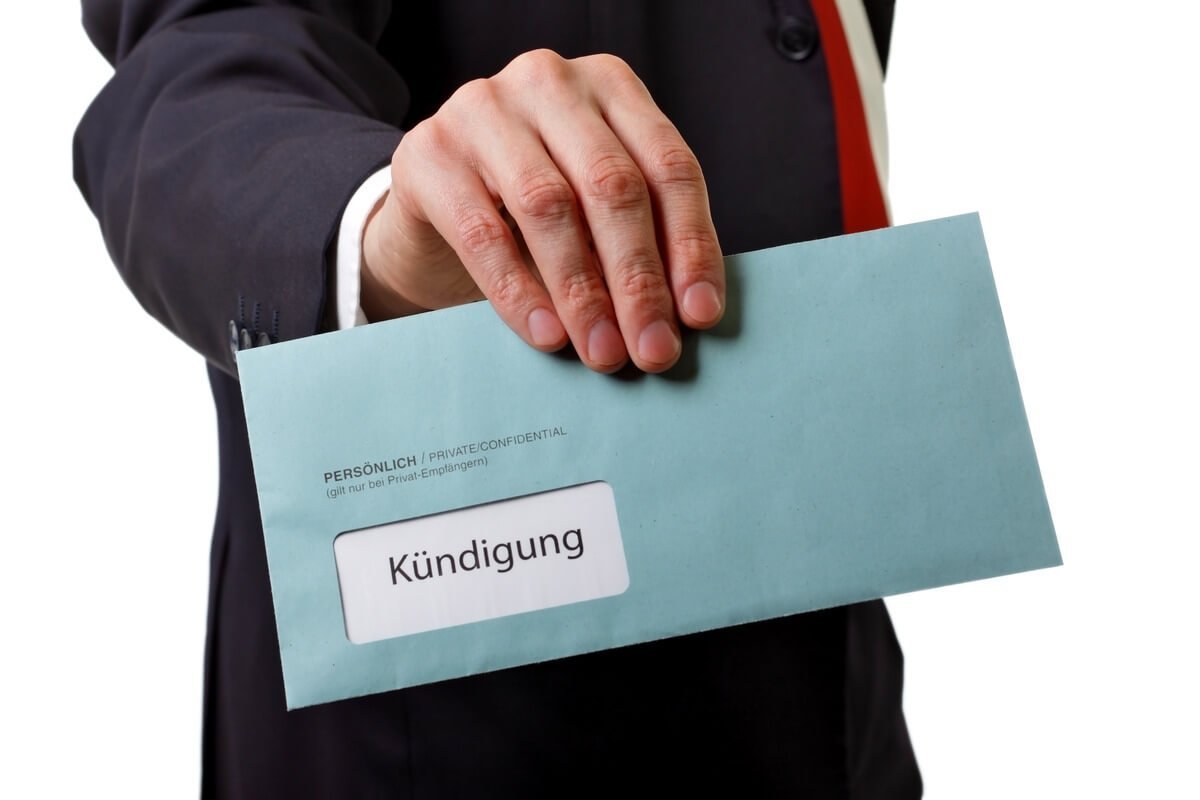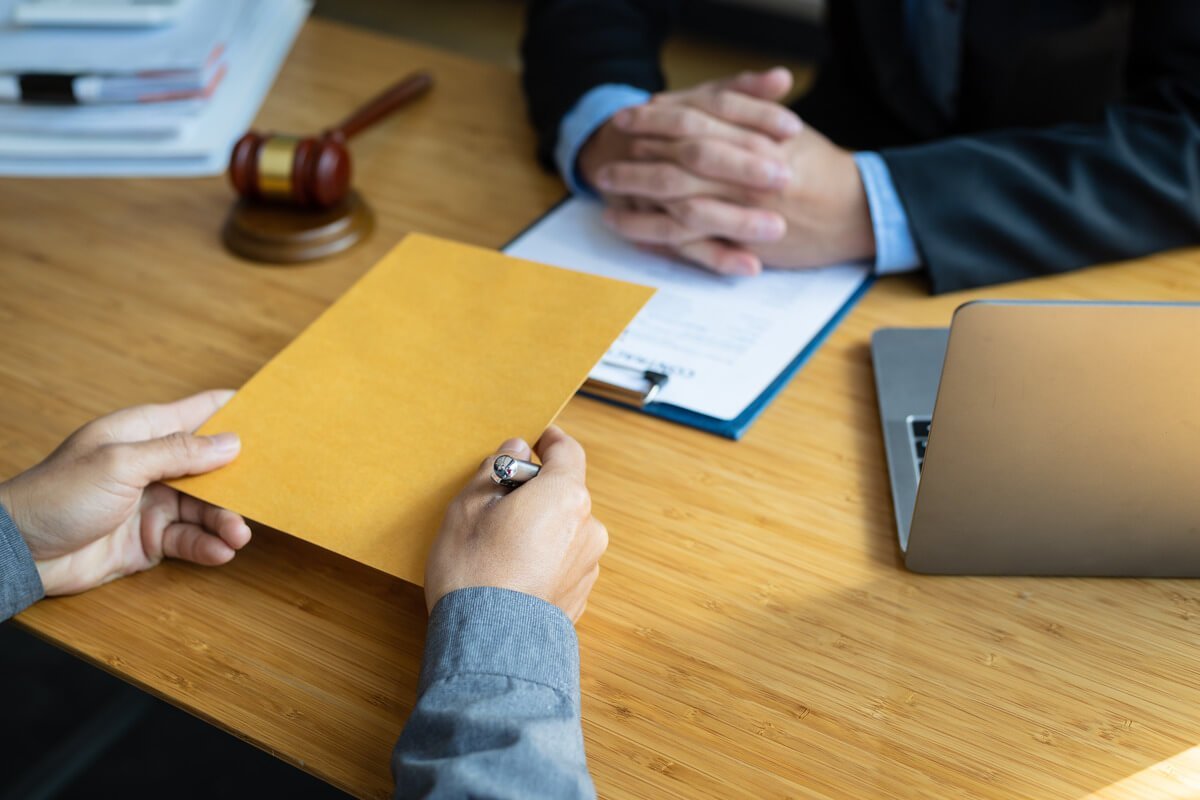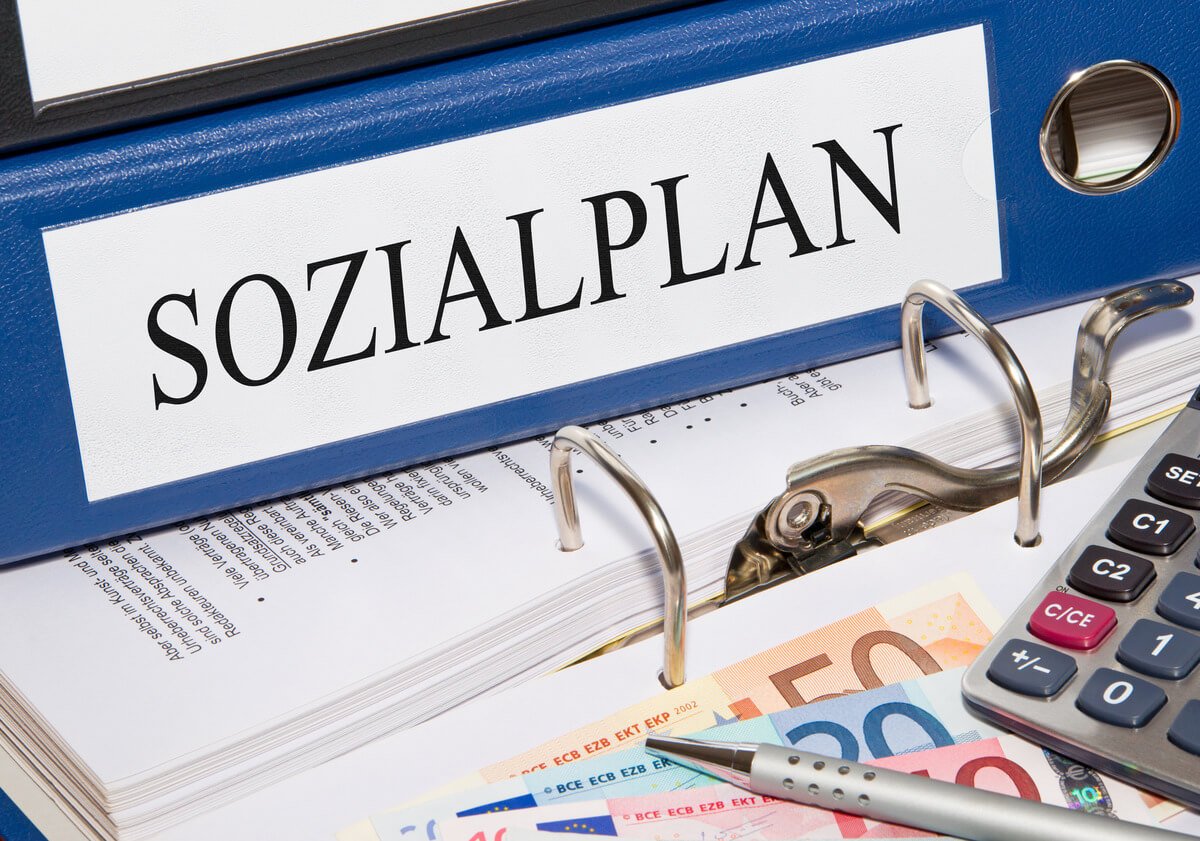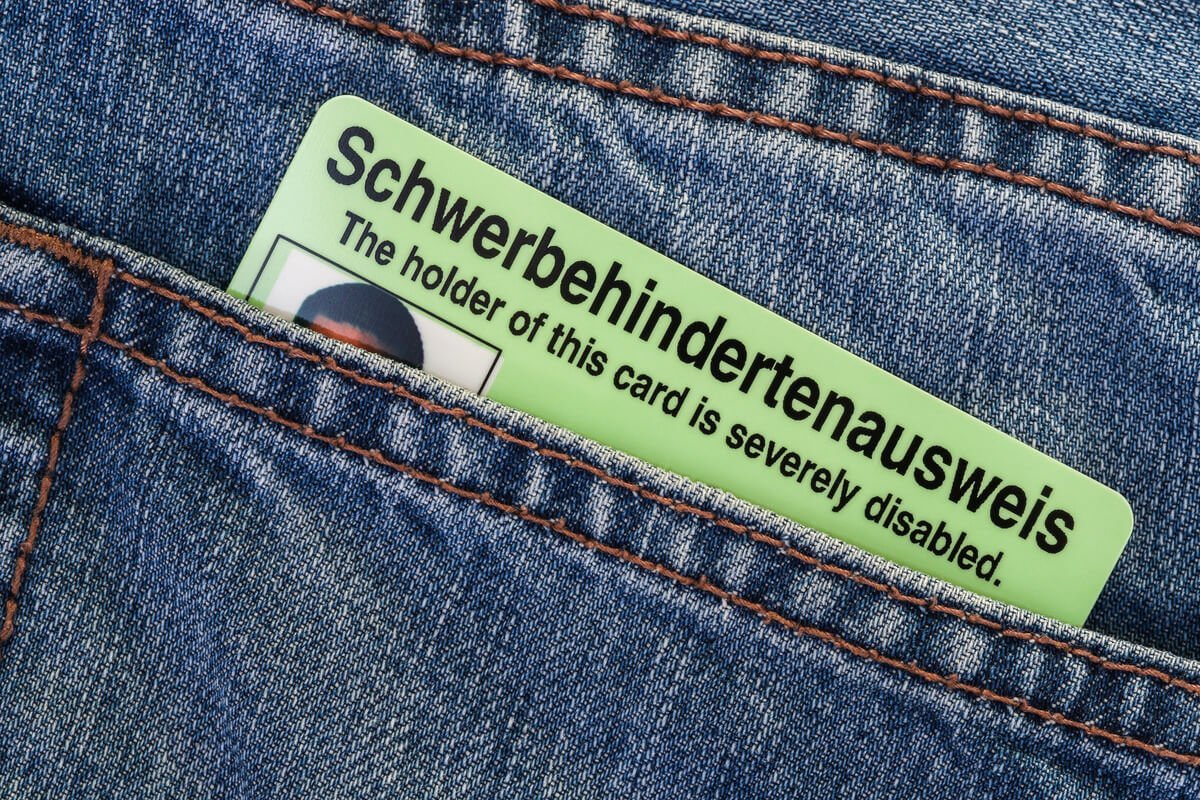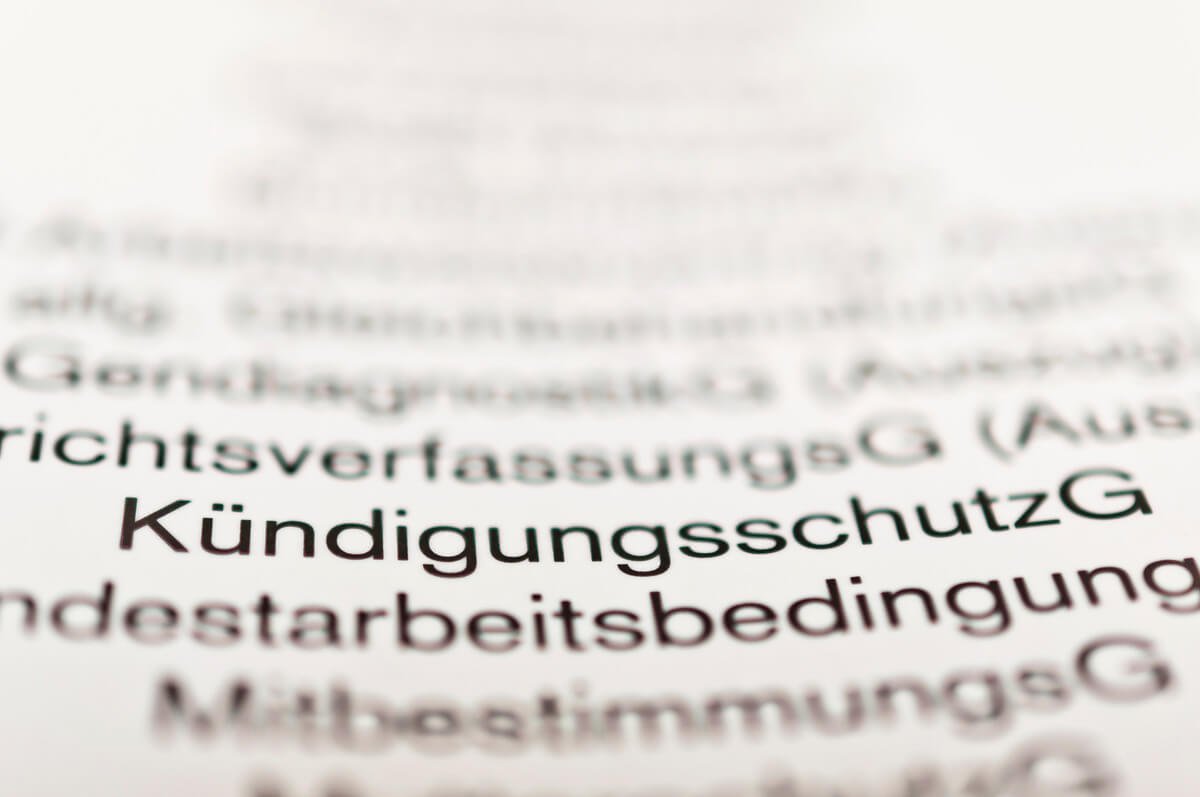

If you are in employment and expecting a child, the Maternity Protection Act protects you as a working mother before and after the birth – including from dismissal. You can work during the last six weeks before the birth, but you don’t have to. You are not allowed to work during the eight weeks after the birth. During this time, you are covered by maternity protection.
During the maternity protection periods, you will generally receive roughly the same amount of money as before with the maternity allowance. However, further questions often arise: What health protection is available during pregnancy, what protection periods are there before and after delivery, am I financially secure, is my job secure? The following article answers these and other questions.

How much severance pay are you entitled to? Calculate now!
- Calculate your individual severance pay for free
- Calculation of the standard payment up to a very high settlement
- Get a strategy to maximise your severance pay
The most important information in brief:
- The Maternity Protection Act protects women and their children during pregnancy, after childbirth and while breastfeeding.
- Maternity protection begins with pregnancy. Pregnant women should notify their employer as soon as they know they are pregnant.
- Protected periods: No employment in the last six weeks before delivery and eight weeks after delivery. The deadlines may be extended. The respective health insurance companies offer online deadline calculators.
- Employers must carry out a risk assessment and discuss it with the person concerned.
- Financial benefits: You can receive maternity pay outside of the protected periods. Or maternity pay in the protected periods plus allowance from the employer
Content
- Who is protected by the Maternity Protection Act?
- When does the protection of the Maternity Protection Act begin?
- What are the protection periods before and after childbirth?
- What protection do you have with regard to working hours during pregnancy?
- Employer must carry out risk assessment
- Which activities are not allowed for pregnant and breastfeeding women?
- Protection of the workplace during pregnancy
- Financial benefits during and after pregnancy
- Maternity protection and transition to parental leave
- Frequently asked questions (FAQs)
Who is protected by the Maternity Protection Act?
The Maternity Protection Act protects the health of the woman and her child at work, in training and at university during pregnancy, after childbirth and during breastfeeding. A woman should be able to continue her employment during this time without endangering her health or that of her child during pregnancy, after childbirth and while breastfeeding without being disadvantaged. The law not only protects female employees, but also a wide range of other workers. These include, among others, those in vocational training, interns, employee-like individuals and, under certain conditions, schoolgirls and students, etc.
When does the protection of the Maternity Protection Act begin?
Maternity protection begins with the pregnancy. Therefore, a pregnant woman should inform her employer of her pregnancy and the expected date of delivery as soon as she knows she is pregnant. A breastfeeding woman should inform her employer as early as possible that she is breastfeeding, § 15 MuSchG. The employer can request proof of pregnancy. This is done by means of a medical certificate or that of a midwife stating the expected day of delivery. The costs for this are borne by the employer.
What are the protection periods before and after childbirth?
Before childbirth:
A pregnant woman may not be employed in the last six weeks before childbirth. However, she can expressly declare her willingness to work. This declaration can be revoked at any time.
The expected date of childbirth is decisive for calculating the protection period before childbirth. Your respective health insurance funds offer period calculators for this purpose, e.g. (in German only) the AOK period calculator & period calendar | AOK employer service or DAK: period calculator maternity protection (dak.de)
After childbirth:
The employer may not employ a woman for a period of eight weeks after childbirth. The protection period after childbirth can be extended to twelve weeks:
- in the case of premature births,
- in the case of multiple births and
- if a disability is medically diagnosed in the child before eight weeks after the birth.
In the case of early delivery, the period of protection after the birth is extended by the period by which the period of protection before the birth was shortened.
What protection do you have with regard to working hours during pregnancy?
Special working time regulations apply during pregnancy to protect the health of mother and child. These include limits on daily working hours, a ban on night, Sunday and holiday work, as well as time off for examinations and breastfeeding. These regulations are intended to ensure that pregnant and breastfeeding women are not overburdened.
No overtime
An employer may not employ a pregnant or breastfeeding woman in a job that involves working more than eight and a half hours a day. For women under 18 years of age, the limit is eight hours a day. Working hours for multiple employers must be added together. After the daily working hours, an uninterrupted rest period of 11 hours is mandatory.
No night work
An employer may not employ a pregnant or breastfeeding woman between 8 p.m. and 6 a.m.. There are a few exceptions to this in the law. For example, the competent authority can grant a permit for employment between 8 p.m. and 10 p.m.
No work on Sundays or public holidays
The employer may not employ a pregnant or breastfeeding woman on Sundays or public holidays. There are statutory exceptions to this rule, for example, if the woman has given her explicit consent and other requirements are met.
Time off for examinations and breastfeeding
The employer must release a woman from work for the time necessary to undergo examinations within the framework of statutory health insurance in the case of pregnancy and motherhood. This also applies to women who are not covered by statutory health insurance.
The employer must release a breastfeeding woman at her request during the first twelve months after childbirth for the time necessary for breastfeeding, but at least twice a day for half an hour or once a day for an hour.
Employer must carry out risk assessment
The employer must carry out a risk assessment after being notified of the pregnancy. In doing so, the employer is obliged to
- organise the working conditions in such a way that health risks to a pregnant or breastfeeding woman or her child are avoided as far as possible and ‘unjustifiable risks’ are excluded.
- The employer must assess the risks for each activity according to type, extent and duration. They must decide whether (1) no protective measures, (2) a reorganisation of the working conditions or (3) a continuation of the activity at this workplace is possible.
- The employer must observe a specific order of priority: first the reorganisation of the working conditions, then a change of workplace and finally a ban on employment.
- The employer must offer the woman a meeting to discuss the risk assessment.
NOTE: You can discuss any questions you may have with the works council, the company doctor or the occupational safety specialist.
Which activities are not allowed for pregnant and breastfeeding women?
The Maternity Protection Act contains a long and detailed list of activities that are not allowed for pregnant and breastfeeding women. They are not allowed to work:
- with certain hazardous substances or biological substances.
- in a job that exposes the woman to physical, mechanical or other harmful effects.
Medical prohibition of employment
The employer may not employ a pregnant woman if, according to a medical certificate, her health or that of her child will be endangered if she continues to work. You can find more details on this in our article ‘Employment ban during pregnancy’.

Free initial consultation with a specialist lawyer
- 15min free initial consultation with a lawyer
- Prompt online appointment via Calendly or quick call-back
- Strategy for negotiating your severance pay
Protection of the workplace during pregnancy
Any termination (ordinary, extraordinary or dismissal with the option of altered conditions of employment) of a woman’s employment is prohibited under the following conditions:
- Termination during pregnancy
- Dismissal up to four months after a miscarriage after the 12th week of pregnancy
- Dismissal up to the end of her maternity leave after childbirth (but at least up to four months after the birth)
A further requirement is that the employer was aware of this at the time of dismissal or if he was informed of this within two weeks of receiving the dismissal. However, in special cases, the competent authority may exceptionally declare the dismissal to be permissible.
Nevertheless, the three-week deadline for filing a complaint must be observed
If you receive an ‘obviously’ unlawful dismissal during your pregnancy, the three-week deadline still applies, during which you must file a complaint with the labour court after receiving the dismissal. If you miss this deadline, the dismissal is considered effective after the deadline has expired. You can find more information in our article on the Unfair Dismissals Protection Act.
Financial benefits during and after pregnancy
A woman who is not allowed to work or who is only allowed to work outside the protected periods before or after childbirth because of a prohibition on employment receives a ‘maternity pay’ from her employer, Section 18 MuSchG. During the prohibition on employment, the employer has to pay the average wage of the last three calendar months before the onset of pregnancy. If wages fluctuate considerably, the last 12 months can be used as a reference. The maternity pay is different from the maternity allowance. The employer and the health insurance fund only pay the maternity allowance during the protected periods (six weeks before and eight weeks after the birth). This is explained in the next chapter.
What is the maternity allowance and when is it paid?
A woman who is a member of a statutory health insurance fund receives maternity pay for the duration of the protected periods, i.e. 6 weeks before and 8 weeks after the birth, as well as for the day of the birth:
- If you are in employment at the time of the protected periods, you will receive maternity pay.
- The maternity pay is calculated according to the average net earnings per calendar day. However, you can only receive a maximum of €13.00 per calendar day.
- You will receive the maternity allowance for the entire period of the protected periods, even if the protected periods are extended.
- The maternity allowance is paid by your respective health insurance fund.
Procedure for applying for a maternity allowance
To apply for a maternity allowance, proceed as follows:
- You will need a certificate with the expected date of birth, issued by your doctor or midwife.
- Contact your respective health insurance company to find out what other requirements you need to meet. You should also clarify which documents you will need to submit after the birth.
- Send the required documents to your health insurance company. They will check your entitlement and contact you or your employer for any other necessary information.
- The maternity benefit is then paid to you by the health insurance fund from the beginning of the protected period until the expected date of delivery.
- After the birth, the health insurance fund requires the birth certificate and, in the case of premature births, further medical certificates. It is advisable to clarify all of this in advance.
- You remain insured during the protected periods.
- Further information for the AOK (only in German): Maternity pay: What you should know | AOK
- Further information for the DAK (only in German): Maternity pay (dak.de)
Special case: private insurance
A woman who is not a member of a statutory health insurance fund receives maternity pay at federal expense for the period of the protection periods before and after delivery as well as for the day of delivery. This amounts to a maximum of €210. To receive this, you must submit an application to the Federal Office for Social Security. You can find more information and contact details here: Frequently Asked Questions – www.bundesamtsozialesicherung.de
What is the maternity pay supplement and who pays it?
The employer must pay a supplement to the maternity pay, Section 20 MuSchG. This supplement is the difference between 13 euros (from the health insurance fund) and the average net earnings per calendar day of the last three calendar months before the start of the period of protection before the birth. The allowance is paid for the duration of the protection periods, which also applies to extended deadlines. More information:
- for AOK: Maternity pay employer allowance | AOK employer service
- for DAK: Entitlement to maternity pay from the employer (dak.de)
Maternity protection and transition to parental leave
The transition from maternity leave to parental leave is an important phase in the life of young families. Here you will learn when maternity leave ends and parental leave begins, which working time regulations apply during this period and how financial benefits such as maternity pay and parental allowance are calculated. This section gives you an overview of the legal provisions and helps you to organise this crucial phase of life in the best possible way.
When does maternity leave end and when does parental leave begin?
The maternity leave period after the birth lasts eight weeks (12 weeks if there are grounds for an extension). During this time, there is an absolute ban on employment. It is not possible to earn additional income during this time. After the 8 or 12 weeks have expired, parental leave can begin. According to the Federal Parental Allowance and Parental Leave Act (BEEG), you are allowed to work up to 32 hours per week on average per month.
Is the period of maternity leave credited towards the duration of parental leave?
If the mother takes immediately after the maternity protection period the parental leave (or: if she takes after the maternity protection period leave and then goes directly into the parental leave), the 8 weeks of maternity protection period is credited to the duration of parental leave.
How do the financial benefits in maternity protection and parental leave relate to each other?
The two benefits are not paid at the same time. If the mother takes parental leave immediately after the maternity protection period, the following applies:
- The maternity allowance is fully credited to the parental allowance, Section 3 of the Federal Parental Allowance and Parental Leave Act (Bundeselterngeld- und Elternzeitgesetz BEEG). Reason: The maternity benefits and the parental allowance have the same purpose. They compensate for the loss of income after the birth.
- Result: If the maternity benefits are higher than the parental allowance, you will only receive the maternity benefits. If the parental allowance is higher, you will receive the difference in the form of a parental allowance in addition to the maternity benefits.
- Further information: Parental Allowance and Parental Leave brochure from the Federal Ministry for Family Affairs: Parental Allowance and Parental Leave (bmfsfj.de) This also applies if you are already on parental leave with another child and are expecting another child.
- If you have private insurance, you are not entitled to maternity pay. You will only receive a one-off reduced maternity allowance of €210 from the Ministry of Social Security (BAS). This is not deducted from the parental allowance.
Frequently asked questions (FAQs)

Free initial consultation with a specialist lawyer
- 15min free initial consultation with a lawyer
- Prompt online appointment via Calendly or quick call-back
- Strategy for negotiating your severance pay
- Employment ban during pregnancy: your rights under German labour law
- Labour law regulations in the event of termination during pregnancy
- Your rights as a pregnant woman in the probationary period
- Action for unfair dismissal: When is it worth taking legal action?
- Termination during parental leave in Germany
